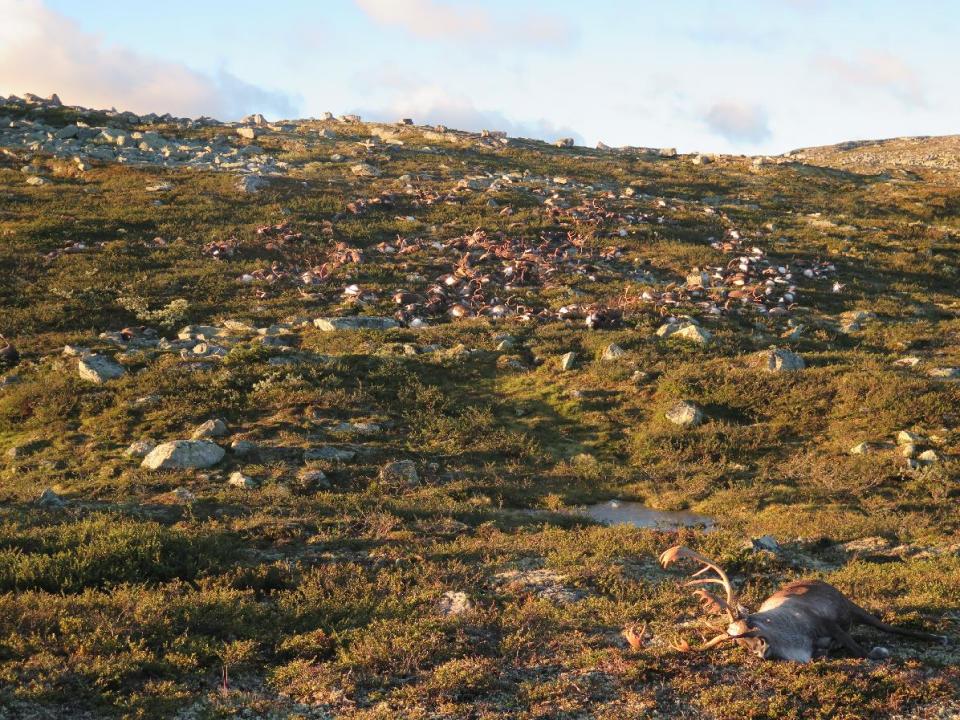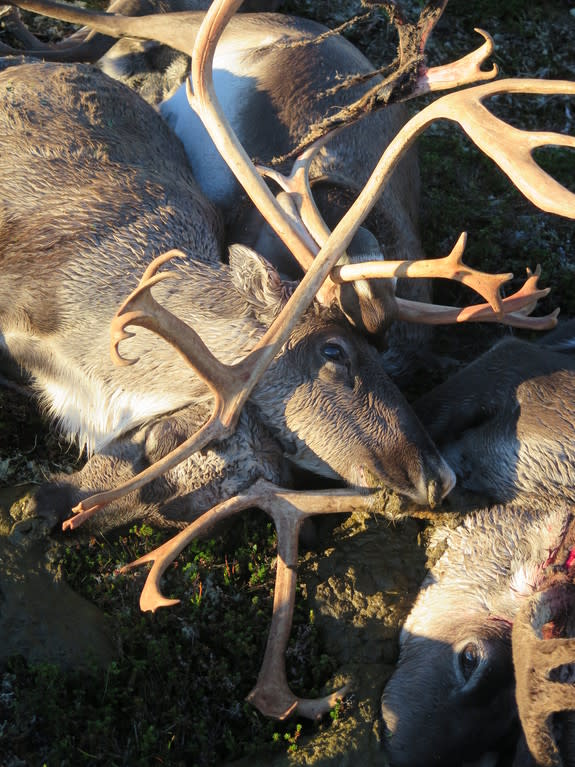More Than 300 Reindeer Killed By Lightning: Here's Why
More than 300 wild reindeer were killed after being struck by lightning in Norway, in what government officials say was an unusually deadly event. It's not uncommon for wildlife to be killed by lightning strikes, but what made this storm so deadly?
Most lightning deaths that occur in groups are due to the ground current, John Jensenius, a lightning safety expert from the National Oceanic and Atmospheric Administration, told The Verge.
"First, there's a direct strike — this is what most people think of when they think of lightning — that hits the tree or maybe the ground nearby," Jensenius said. "The energy then spreads along the ground surface, and if you're anywhere near that lightning strike, you absorb it and get shocked." [Electric Earth: Stunning Images of Lightning]
The lightning current travels up one leg and down another, Jensenius said, so animals are more vulnerable because their legs are more spread out — the ground currents travel more easily in their bodies.
A total of 323 reindeer, including 70 calves, were killed during a lightning storm on Friday (Aug. 26), according to the Norwegian Environment Agency. Of the 323 reindeer killed, five were euthanized because of their injuries, agency officials said.
The animals were found in Hardangervidda, a national park that is home to an estimated 10,000 wild reindeer, Europe's largest herd. As herd animals, reindeer typically travel together in large groups. Kjartan Knutsen, a spokesman for the Norwegian Environment Agency, told The Associated Press that reindeer tend to stay very close to each other in bad weather, which could explain how so many were killed at once.
Though it is not uncommon for reindeer and other wildlife to be killed by lightning strikes, the agency said this is the deadliest known event to date.
Samples were collected from the fallen animals as part of a national survey to test for chronic wasting disease (CWD) — a nervous system disease found in deer and elk that results in brain lesions — according to the Norwegian Environment Agency.
Normally, the agency would leave the dead animals where they fell and let nature take its course, but given concerns over the spread of CWD, agency officials said they are waiting for the test results before a final decision is made.
Original article on Live Science.
Editor's Recommendations
Copyright 2016 LiveScience, a Purch company. All rights reserved. This material may not be published, broadcast, rewritten or redistributed.

 Yahoo News
Yahoo News 


